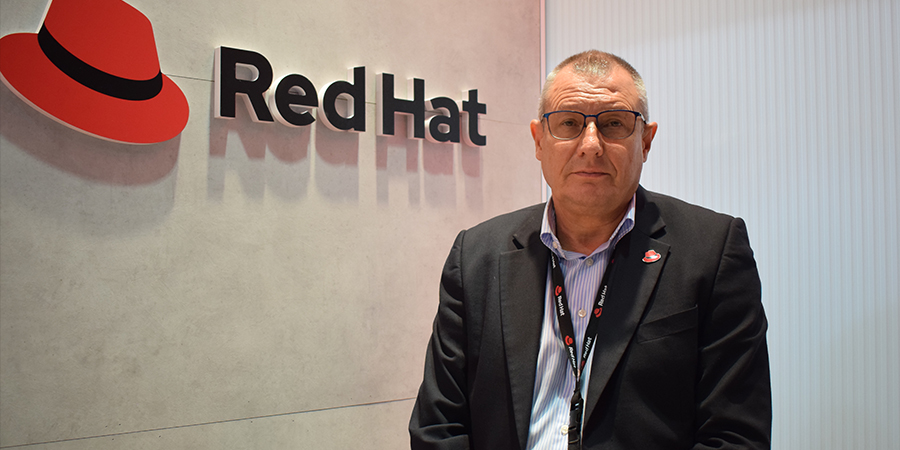Telecom Review secured an exclusive face-to-face interview with Philip Andrews, Red Hat’s vice president, CEMEA during the GITEX 2021 event. Andrews emphasized the role of enterprise open source and how the company fills the gap for digital talent.
For 28 years, Red Hat has been working in open source, combining open culture and automated processes. Certainly, the company helps deliver agile and flexible services and prepares businesses to move forward faster and be ready for future changes.
What is the role of enterprise open source in the digital journey within the CEMEA region?
Firstly, I would have to define what enterprise open source is. Having been with Red Hat for 13 years, I'd say the open source industry development within the company for the last 28 years has built a model that takes what is essentially a very creative and innovative way to create software using people in the community.
What we do is we take that in QA, we certify it, we harden it, and we nurture it before it becomes a finished product. In line with this, we provide support for necessary security practices, and then it becomes an enterprise open source. So what is the role of that in the journey of the digital enterprise? All the enterprises we work with — telcos, commercial, financial, government, etc. — are becoming more digital with their services.
To do that we need what we call digital DNA, which enable the capability to build cloud-native applications on infrastructure software, highly reliant on many open-source technologies such as OpenShift – our version of an enhanced Kubernetes container platform. This is available to help customers or managers know about the structure on which they want digital assets to do business with end customers.
On the other hand, open-source is helping build the mobile area technologies such as Android, or the chat web transformation technologies such as OpenStack. We've also helped to run the next-generation applications with technologies like Kubernetes. All of those technologies are used every day in the digital journey and enterprise open source improves the availability and reliability of automated operations.
Can you elaborate on how enterprise open source improves networking and database?
In terms of the way open source improves networking, it has been a major transformation, particularly in the way people build networks. Before, they used to use very large, proprietary network routers and switches that were custom-designed for the job. Over the last few years, it has become a norm to build computers supporting technologies such as virtual network functions (VNFs) which are virtualized open containers, and build a network and software security standard.
Therefore, what companies’ open source has really transformed is the way we build networks that are completely free from dedicated hardware to become open networks and computers. Now, open source software sits alongside functionality that makes the network perform as a network, or sometimes as a cloud computing platform for applications.
In terms of databases, there are many different open source databases like MongoDB and MariaDB. This gives customers a huge choice of databases that they can work with and tools for data analysis. Once again, enterprise open source is where we have supported versions of these technologies, ready for enterprise use for reliability and serviceability.
How would the increase of edge computing and IoT within CEMEA affect Red Hat's product offerings?
What you will see together with increased cost for edge computing is that computing is moving more and more to the edge of the network. You hold in your hand a device that's already an edge computer or mobile phone. But now, you typically start to see edge computers in homes.
It could be network boxes with digital functionalities or edge computers where people have electricity grids or utility grids where those edge computing devices are helping to understand what's going on in a house and understand how things are working. Those edge computing devices will need operating environments or already have applications running inside them.
How does this affect Red Hat’s business? How do we help to supply operating environments to the thousands or millions of devices on the edge? How do we make that support? How do we make affordable, operating systems? These challenges are addressed from the data center to the desktop to the edge. It's an area that we focus on very heavily, and across the world, not just in the CEMEA region.
Can you tell us more about the Red Hat Academy and how it fills the gap on digital talent?
One of the biggest challenges we all have in this new digital arena is the way business is done; to create software, to create new applications, and to have all kinds of different ways of being creative enough to run an application. This makes the business run in a completely different way nowadays.But, of course, you need programmers, you need people capable of dealing with this technology. The Red Hat Academy is bringing standard training courses available to help develop today’s engineers and architects, and helping universities put programs within curriculums, and letting them deliver those to students.
Creating these students who will come out of the university much more ready to talk about enterprise programming job, an application job, or an architect job –because they’ve actually got access to the technology and the training before getting into the field– is very critical. The way I see it, there will never be enough engineers as the world becomes more digital.









